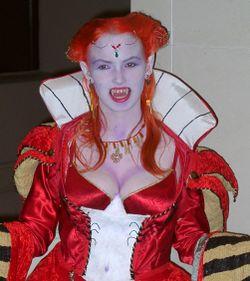 At times the lines between fact and fiction are blurred when it comes to the fantastic in popular culture and identification with the various characters and creatures that inhabit it. At times the lines are not so much blurred as they are dissolved. Christopher Partridge speaks of “fact-fiction reversals” that exist, and that as a result various influences in entertainment have such a strong influence that they begin “to have a shaping effect on Western plausibility structures.” This is particularly the case with popular sacred narratives that are informed by what Partridge calls “popular occulture” with its exploration and celebration of fairies, vampires, werewolves, orcs and Jedi knights. Adam Possamai has discussed the significance of these characters and their accompanying myths as well in his exploration of “hyper-real religions” devoted to myths such as Matrixism and Jediism. Given the impact of the literature and films of the fantastic on popular culture and its participants, scholars like Partridge conclude that it represents a phenomenon that “is socially, psychologically, and spiritually consequential.”
At times the lines between fact and fiction are blurred when it comes to the fantastic in popular culture and identification with the various characters and creatures that inhabit it. At times the lines are not so much blurred as they are dissolved. Christopher Partridge speaks of “fact-fiction reversals” that exist, and that as a result various influences in entertainment have such a strong influence that they begin “to have a shaping effect on Western plausibility structures.” This is particularly the case with popular sacred narratives that are informed by what Partridge calls “popular occulture” with its exploration and celebration of fairies, vampires, werewolves, orcs and Jedi knights. Adam Possamai has discussed the significance of these characters and their accompanying myths as well in his exploration of “hyper-real religions” devoted to myths such as Matrixism and Jediism. Given the impact of the literature and films of the fantastic on popular culture and its participants, scholars like Partridge conclude that it represents a phenomenon that “is socially, psychologically, and spiritually consequential.”
Within the context of the nexus of the fantastic and popular culture one of the more interesting expressions of this is the Otherkin. Danielle Kirby has written on this fascinating community in Frances Di Lauro, ed., Through a glass darkly: reflections on the sacred (Sydney: Sydney University Press, 2006). She also presented a paper on this topic at a conference titled Exploring the Religion and the Sacred in a Media Age in the U.K. in 2007. The paper was titled “Pulp fiction and the revealed text: an inquiry into the treatment of fantasy and science fiction narratives within the Otherkin community.” This paper was revised to become a chapter contribution as part of a forthcoming book to be published by Ashgate.
Kirby describes the Otherkin as “a loosely affiliated virtual community with an alternative metaphysical foundation” which can be found at websites such as www.otherkin.net. In her discussion of this community she notes that “The unifying feature of the Otherkin community is a shared belief in non-human, often fantastic or mythological, souls and selves.” As noted above, this understanding of self-identity is forged through the “conscious integration of explicitly fictional narrative into a sacred or spiritual context.” Here the fictional texts of the films of Star Wars informs Jediism, H.P. Lovecraft’s writings inform the Church of All Worlds, and the corpus of vampire mythology in literature and film informs vampires within the Otherkin.
One of the striking features of the Otherkin community is how their interaction with narrative fiction informs a sense of self-identity that goes much further than those involved with Jediism or various aspects of Neo-Paganism. Kirby says that the Otherkin “believe, primarily, that they are in some way other than human. The non-human aspects appear to have been largely drawn from mythology and fantasy literature,” and “[t]his relationship to the fantastic takes a variety of forms and can mean a non-human soul in a human body, multiple souls residing within the same person or inter-species reincarnation.”
In my exploration of the fantastic in popular culture as an academic, the existence of subcultures like the Otherkin with their neo-religiosity represent a fascinating path for research and understanding.





Two quick thoughts:
1/ What about those of us for whom it is not a religion nor spiritual belief? To paraphrase Terry Pratchett it’s kind of like “believing in the postman” i a way. It is what I am. My spirituality is another thing all together.
2/ Labels. It’s all about the labels. Otherkin try to stick on all ready existing labels rather than creating original ones as it makes, primarily, for a quicker method of information transfer. Are elves like Tolkein’s or those of mythology? Mmmmm… sorta. Communication and thus investigation suffers as a result.
Th’Elf, thanks for your thoughts and questions. Joseph Laycock, who has written on the vampire community, has argued that that group is best understood as an identity rather than as a new religious movement. Perhaps this applies to Otherkin as well, in addition to any spiritual components for some.